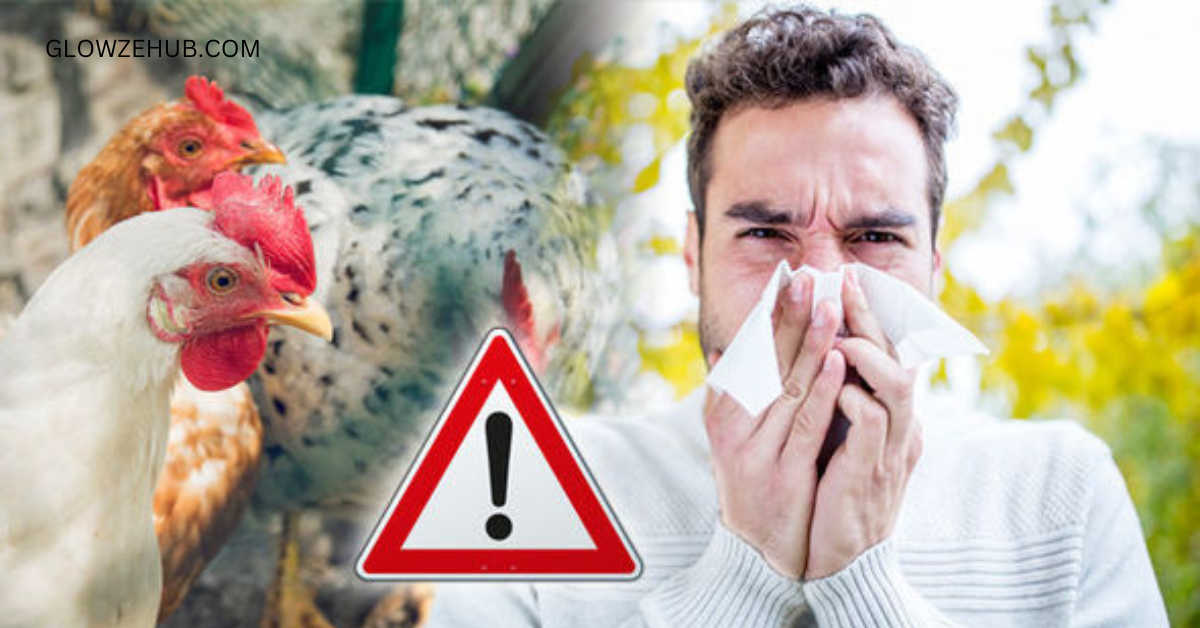A primer on the bird flu: what you need to know and what to do
In response to the global pandemic, here are nine questions and answers.
Is it possible for humans to contract avian flu? Bird flu, also known as avian influenza. A strain of the avian flu that first appeared in circulation in 2024 is still developing within the United States and other parts of the world. If you are curious about what this means, it is helpful to have a fundamental grasp of the bird flu, including what it is, how it spreads, whether or not certain foods are safe, and how to prevent it. Additional information will be gathered as the scientists discover more, so stay tuned.
How does avian flu spread, and what does it entail?
There is a naturally occurring illness known as bird flu, sometimes avian flu. In the same way, that certain influenza viruses disseminate among humans, Type A influenza viruses frequently disseminate among wild birds. This particular strain of the virus is known as H5N1, derived from two proteins on its surface.
Infections caused by the avian flu are highly infectious. There is a high probability that the disease will initially spread among wild water birds, such as ducks, geese, and gulls, as well as shore birds, such as plovers and sandpipers. Their intestines and respiratory tracts are the sites where the viruses are carried and expelled through saliva, mucus, and faeces. There is a high risk of infection between wild birds and domestic poultry, including chickens, turkeys, and ducks.
It is possible for certain bird species, such as ducks, to carry and spread infection without showing any signs of illness. Domestic flocks have a higher risk of becoming ill and possibly passing away due to avian flu. Nevertheless, not all viruses that cause avian influenza are equally dangerous:
- Low Pathogenic avian influenza (LPAI) may result in either no symptoms at all or moderate symptoms in domestic poultry, such as fewer eggs or ruffled feathers.
- Highly pathogenic avian influenza (HPAI) increases the severity of the disease and the mortality rate in poultry afflicted. Currently, An HPAI is what the H5N1 virus is categorized as.
Is it possible for humans to contract avian flu?
Though this does not typically occur, the answer is yes.
If influenza viruses undergo mutations, they can spread from their original hosts, birds, to people and other species. As of the beginning of April 2024, just two instances of bird flu in humans have been reported in the United States since 2022. In May, two further instances were reported. The Centers for Disease Control and Prevention (CDC), which provides weekly snapshots of influenza in the United States, will continue publishing newer bird flu case numbers.
There are three possible entry points for the virus into the body: the mouth, the nose, and the eyes. It is possible, for instance, for a person to breathe in virus particles that are present in the air (droplets, tiny aerosolized particles, or potentially dust). It is also possible for them to touch a surface contaminated with the virus and then touch their eyes or nose. The symptoms of bird flu in people are often comparable to those of seasonal flu, including fever, runny nose, and aches and pains throughout the body.
Which creatures are afflicted by avian flu?
The current H5NI bird flu epidemic is affecting a startling number of animals, which include:
- Wild birds, chickens, ducks, geese, and other domestic and commercial poultry in 48 states and more than 500 countries are all included in this population.
- Dairy cows in nine states and other farm animals
- Aquatic animals, such as seals, sea lions, and even dolphins.
- Wild animals include foxes, skunks and domestic animals like barn cats.
Why do specialists worry about this epidemic of avian flu?
The fact that there has been so much concern and publicity in the news regarding avian flu recently is strange. Indeed, the avian flu has been around for a considerable time. It has been known for a long time that it can occasionally infect non-bird animal species, including humans.
However, there are a few reasons why the present outbreak is distinct and concerning:
Quick and extensive spread.
Additionally, the virus has been discovered in Antarctica, as well as in the United States of America, Europe, the Middle East, Southeast Asia, and several nations in sub-Saharan Africa.
There are numerous afflicted species.
The disease has spread to species that had not been infected before, including animals used in our food supply.
Financial effect.
There could be a significant financial impact on farmers, agriculture-related businesses, and the economy of the affected countries if a substantial number of dairy and beef cows, as well as poultry, become unwell or need to be slaughtered to manage outbreaks.
Opportunities for exposure.
Although there have only been two occurrences of bird flu infections in humans in the US in recent memory, both of which were people who worked with animals, the more humans are exposed to the virus, the more likely it is that it will mutate to make it easier to transfer to humans.
Possibility of deaths. People in 23 countries have infect with H5N1 types of bird flu since 2003. These strains are nasty. More than half of these cases that were recorded ended in death. Remember that the math is not simple. There were probably many more cases of bird flu in people, but those with few or no symptoms or who weren’t check weren’t count, so the number of deaths is probably too high.
New mutations. It is doubtful, but not impossible: if the H5N1 bird flu virus develops changes that allow for efficient transmission from person to person, then the bird flu might become the next human pandemic.
Are the other foods we eat, such as milk, meat, and chicken, safe?
Public health specialists underline the importance of food safety.
Nevertheless, it is not surprising that there has been a great deal of alarm ever since it was discoverer that this outbreak has, for the very first time, gone from birds to dairy cows. What could be more concerning? According to research, fragments of bird flu DNA were identifie in twenty per cent of the commercially accessible milk in the United States. This is not the same thing as a live virus.
To this day, no evidence suggests that the avian flu outbreak discovered in pasteurized milk, beef, or other common foods can cause human illness. According to studies, even if the virus that causes avian flu were to enter the milk supply, it would eliminate by pasteurization. At first, the virus was not found in ground beef, according to the testing.
Of course, you could avoid foods and drinks from animals afflicter with bird flu if you are extremely worry. For instance, you may move to almond or oat milk, even though there isn’t yet any solid scientific evidence to support this.
What if you own pets or work with animals?
Bird flu seldom infects pets. While this is fantastic news, your pets may have come into contact with animals infected with bird flu, such as by eating or playing with a dead bird. So, limiting your pet’s interactions with potentially diseased animals is best.
If you work with animals, particularly birds or cattle, or hunt, the Centre for Disease Control and Prevention (CDC) suggests taking precautions to reduce your exposure to bird flu.
What other precautions can you take
The CDC advises people to take the following precautions to prevent contracting avian flu:
- Keep pets away from sick or dead animals and avoid coming into contact with them.
- Steer clear of animal excrement exposed to bird droppings or contamination, as is often the case on farms.
- Uncooked food should not prepare or consume.
- Avert consuming undercooked or raw meals from animals that might infect with avian flu, as well as raw milk (unpasteurized) and raw milk cheese.
- Wear personal protective equipment (PPE) when working around sick or deceased animals or their excrement, such as safety goggles, gloves, and a N95 face mask.
There is insufficient data to justify more drastic preventive measures, including a complete plant-based diet.
Is there any positive bird flu news?
Even with the alarming information on avian flu, there may not be much risk to human health from this current outbreak. Mutations in virus strains can make them less lethal or less effective in spreading. In an attempt to stop the transmission of bird flu to people, more dairy cattle are being teste. Before being transport over state boundaries, and sick or expose animals are being remove from the food chain.
Additionally, there is more positive news:
- The virus is starting to wear off on some birds. This might make it less likely that animals like birds will keep spreading.
- Creating a vaccine to shield cattle from avian flu might be feasible. Though it’s not sure if this strategy will be effective.
- Genetic testing indicates that existing antiviral medications can treat humans if the virus does manage to transfer to humans.
- Human-to-human transmission has found thus far. This lessens the possibility that the H5N1 bird flu may start the next global health crisis.
- If bird flu infections in humans increase, scientists are developing vaccinations for humans. That target virus strains closely related to the ones driving the present pandemic.
To what extent should you worry about bird flu?
Even though there is still a lot we don’t know, one thing is clear. Farmers and medical professionals will have difficulties keeping ahead of the bird flu epidemic as it evolves. Public health specialists now feel there is little risk to the general public’s health from avian flu.
Thus, there’s no need to alarm about the avian flu. However, using common sense to protect yourself and keep up with relevant news is a good idea.



